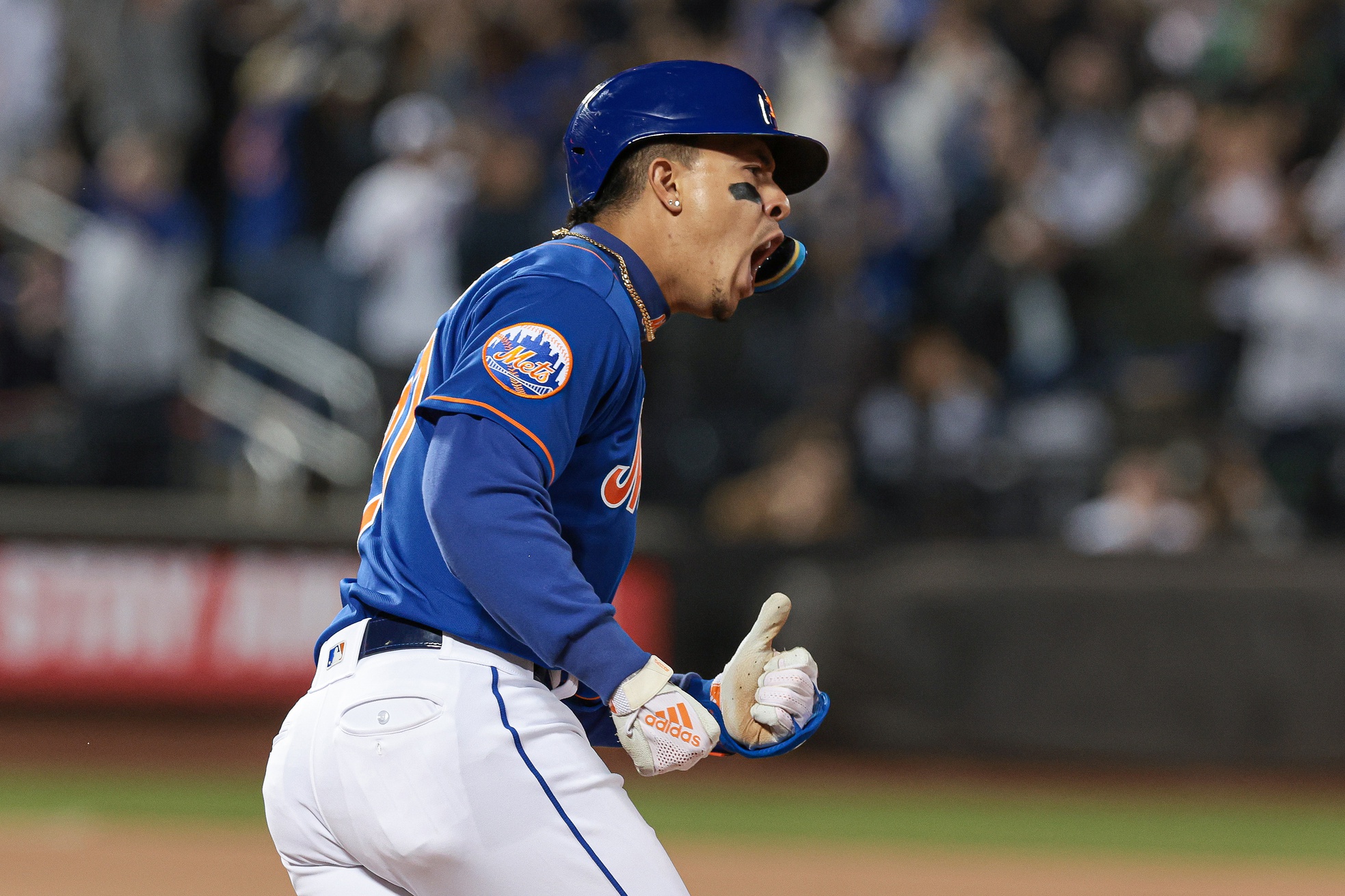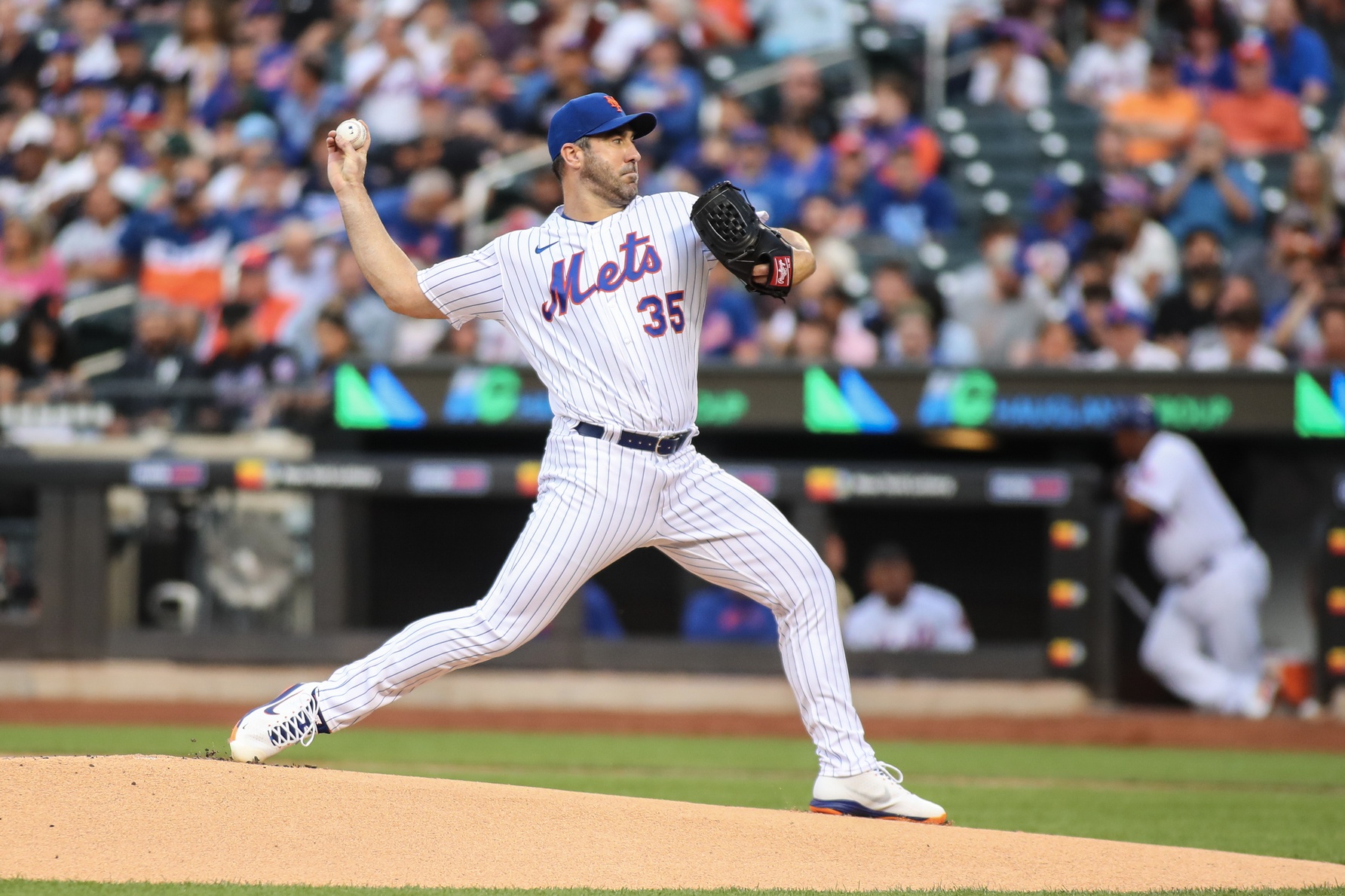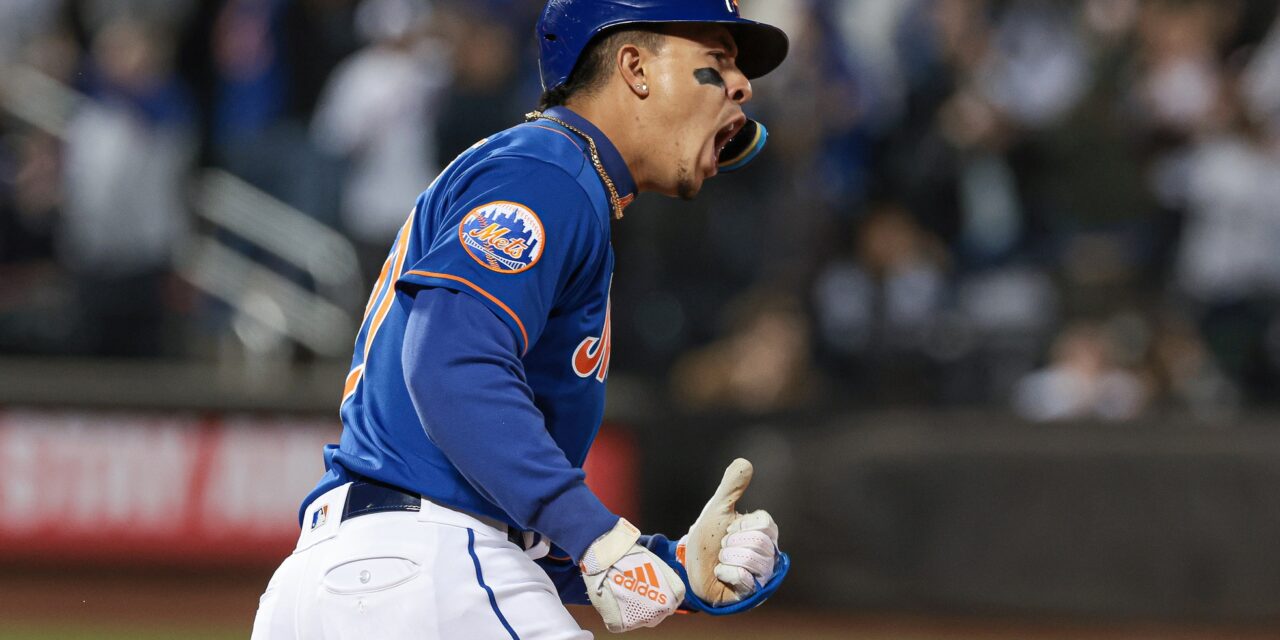
Vincent Carchietta-USA TODAY Sports
As my grandfather (a noted Yankees hater) loves to paraphrase Yogi Berra, you never can tell in baseball.
After going 5-11 against sub-.500 teams since April 25, the New York Mets won two out of three against a team that entered the series with a .738 win percentage. In doing so, they set a possible path out of the darkness that has hovered over the team for the last month.
At the same time, there is a question to be asked: Who are these Mets, really? They’re unlikely to truly be the team that lost 16 out of 23 before taking the last two games of the series. But can they be the team that came back from the dead three separate times in a game, then contained a lethal lineup the next day?
Either way, it feels good to have choices for the “3 Up” section, at least for one series.
3 Up
Best Starts of the Season
The Mets have been searching for any spark from their starting pitchers. In the rare situation that a starter has pitched well, the next day’s thrower bombed from the first inning. If momentum carries as far as the next day’s starting pitcher, then it’s no wonder the Mets have been going backward.
Though the series started off no differently, Kodai Senga and Tylor Megill provided back-to-back excellent starts to give the Mets a chance against a formidable lineup. Senga went six brilliant innings, striking out 12 while allowing just one run on three hits and three walks. Five of his strikeouts came on the fastball, four were on the ghost fork and the remaining three were spread between the sweeper, slider, and cutter.
Senga caught Taylor Walls looking at a 3-2 cutter for his final out of the night, as Walls was likely looking for the forkball. If Senga can throw his other pitches for strikes in high-leverage moments, it can be a tremendous plus for him to keep hitters guessing. They expect the ghost fork on Senga’s “have-to-have” pitches, and they know that it breaks out of the strike zone. But if Senga can throw the fastball for a strike and make the hitter think it’s a forkball, he can be a highly effective pitcher.
Kodai Senga, 97mph Fastball and 83mph Ghost Fork, Overlay. 😯 pic.twitter.com/ZfZa2N7wOF
— Rob Friedman (@PitchingNinja) May 17, 2023
On Thursday, Megill had the monumental task of following up the previous day’s emotional victory with a strong outing. For the 12th consecutive game, the Mets fell behind first, as Megill surrendered a sharply-hit double to start the game, followed by a topped infield single and an RBI groundout from Harold Ramírez. He then settled down to face the minimum through the next four innings, the lone baserunner reaching on an error.
In the sixth, with the Mets ahead 2-1 and the first two down, Megill gave up a game-tying homer to Josh Lowe. He followed it up with a walk and a single, seemingly tiring, despite having thrown only 77 pitches at that point. Fortunately, on an 0-1 swing-and-miss, Michael Pérez caught Ramírez too far off first. The Mets got out of the inning on the resultant rundown.
Megill still hasn’t been able to find consistency game in and game out, but this was a very encouraging performance against a powerhouse lineup. The fact that he and Senga did so in back-to-back games gives the Mets hope yet for their starters.
The Kids Stoke Resilience
The middle game of the series was a rollercoaster ride carried by the kids. In his first game back in the majors, Mark Vientos came up in the seventh with a runner on first and one out and the Mets down 2-0. He had already hit the ball on the screws twice (99.6 and 107.5 mph exit velocities) but had two groundouts to show for it. Vientos got an 0-1 slider and launched it 414 feet at 103.6 mph, tying up the game.
The bullpen promptly put the Mets in another hole, leaving them trailing 5-2 in the ninth. After Daniel Vogelbach walked to lead off the inning and Canha was hit by a pitch, the kids came up in a row. Brett Baty struck out swinging, while Vientos stung his fourth straight ball, which was caught in center field. The Mets’ last gasp came down to Álvarez, who was 0-for-3 with three groundouts to that point. He got a hanging sweeper and tattooed it 426 feet off the facing of the second deck, a no-doubter to tie the game.
In extras, the Mets again put on their rally caps while trailing 7-5. With Brandon Nimmo standing on second base as the ghost runner, Jeff McNeil singled to put runners on first and third. Francisco Lindor struck out, bringing up Pete Alonso. The Polar Bear, sick with a sinus infection, showed the ice in his veins by depositing a walk-off three-run homer into the second deck.
The kids not only prompted the first two comebacks, but they also brought energy with their celebrations. Vientos exclaimed emphatically on his home run while Baty pounded on the front of the dugout. Álvarez had an epic bat flip when his ball landed over the fence and jumped up into the air in exultation. The daycare trio then shouted for joy when Alonso completed the rally.
Though it’s easy to be enthusiastic with that kind of win, Álvarez, in particular, seems to bring a youthful abandon to his celebrations. It’s certainly warranted when he and the others led the Mets in a never-say-die attitude that has largely eluded them in 2023 after its abundance last season.
Alonso Relaunches
Alonso came into the series slashing just .180/.349/.380 with three home runs and 11 strikeouts in 15 May games. He equaled that home run total in the three games against Tampa Bay, slamming one in each contest. Although his line in the series was a modest 3-for-12, those three all left the yard. That has been Alonso’s calling card this season, as 16 of his 39 hits (41%) have been home runs.
The fact that he did it while sick prompted Buck Showalter to jokingly ask if there was something he could do to keep his slugger sick all the time. When told about it by a reporter, Alonso half-laughed, shook his head, and said, “I mean, I can play well when I’m not sick.”
The recent evidence seems to point to the contrary, but regardless, Alonso’s performance was crucial for the Mets’ series victory.

3 Down
Ver Was Cy Young Winner?
Justin Verlander‘s Citi Field debut did not go as planned. The reigning AL Cy Young winner actually did not allow a first-inning run, a rarity for a Mets starter. He worked through some trouble in the second, as well, before starting his meltdown in the third. With two on and two out, Verlander surrendered a three-run homer to Isaac Paredes, digging himself a hole. He gave up another run in the fourth on an RBI single by Ramírez, then allowed another two to score on Paredes’ second homer in the fifth.
Verlander finished out his five-inning outing to boos from the Mets faithful. His final line was eight hits, six earned runs, two walks, just three strikeouts, and two homers. His tendency to get stronger as the game progresses eluded him.
Verlander was not necessarily hit very hard in the early going, but he made mistakes at inopportune moments. After dancing around a walk and a couple of softly-hit singles in the first two innings, he gave up a 74.4-mph single and a walk ahead of Paredes’ first dinger, which in and of itself was hit at only 92.5 mph. The next three runs were all on well-struck contact, but that third-inning homer was what had already sent the outing off the rails.
The boos from the Citi faithful may have seemed harsh, as it was one bad start (albeit very bad) against the best team in baseball. It seemed to have been more of a response to the Mets’ overall struggles than just Verlander himself, but he bore the brunt of it. The ire likely softened a bit with the back-to-back wins over the next two days. Still, with all the struggles of their starting pitching, the Mets need Verlander to be in his Cy Young form for every single start. That is a lot to ask from a 40-year-old, even one with his track record and salary.
There isn’t much of a reason to worry about Verlander. However, when a team is struggling already, one bad start from an ace can feel like the sky is falling.
Ottavi-No or Sho-No?
Adam Ottavino pitched a scoreless inning in the series opener. When he was asked to come back for a second consecutive night, though, it did not go well. Ottavino entered for the eighth in a game tied 2-2 after Vientos’ homer and promptly allowed the Rays to pull ahead once more. He walked Randy Arozarena, who then stole second after a Mets challenge that was upheld. On a 1-2 pitch, Ottavino’s sweeper nearly caught the heart of the plate, and Brandon Lowe blasted it for a two-run homer to put Tampa Bay ahead.
Ottavino also gave up a single and hit by pitch with two outs, but he struck out Francisco Mejía to limit the damage. Still, it was a disappointing outing from the Mets’ setup man.
Although this section could end here, it points to a greater problem in the series—namely, a number of questionable decisions made by Showalter. In the sixth inning, with the Mets down 1-0, Showalter pinch-hit Vogelbach for Tommy Pham despite knowing that the Rays had the left-handed Jake Diekman warming in the bullpen. Predictably, Diekman struck out Vogelbach with three consecutive called strikes near the heart of the plate. Vogelbach’s season totals against left-handers are now 0-for-8 with no walks and four strikeouts.
Bringing in Ottavino for the eighth was also questionable. He has seemingly struggled every time he pitches on back-to-back nights. While wanting your best shot in a tie ballgame is reasonable, using Brooks Raley might have been a more logical choice. Raley had not pitched since the second game of the doubleheader on Sunday, even though he did have 33 pitches in that outing. Though four of the five hitters coming up in the inning were slated to bat right-handed, focusing on handedness matchups over rest in a tight game may not be the wisest course of action.
In the series finale, Showalter made another curious decision, similar to one that has bitten him frequently in his Mets tenure. Megill cruised through the middle innings after surrendering a run in the first. However, he started to struggle in the sixth, giving up a home run with two out, followed by a walk and a single.
Given that this has been Megill’s modus operandi throughout his time in the majors—losing his stuff at around the sixth inning—choosing to leave him in to face Lowe was a very risky move. It was understandable because the Mets’ bullpen was a bit short and Megill was at only 77 pitches, but when a starter shows wear like that, the results are often not good. Luckily for Showalter, Ramírez got caught too far off first to end the inning. Still, good results do not necessarily excuse questionable processes.
It’s hard to nitpick too much when the team wins a series against the best team in baseball. However, this may be the right time to do it—when those decisions were actually critical rather than being incidental to flailing performances.
Losing Nimmo Again
This one also seems like a nitpick after Nimmo had hit well over the previous week or so. However, he did go 1-for-13 with four strikeouts in the series. His lone run scored came as the 10th-inning ghost runner on Alonso’s walk-off homer in the middle game. His average has once again dipped below .300.
This is not exactly concerning. However, since “3 Up, 3 Down” refers to one series, at least one of the “3 Down” will generally be the batter who had the worst series at the plate. In this case, it was Nimmo (although Vogelbach went 0-for-6 with two walks and three strikeouts).
The Mets remain at home to face the Guardians on Friday in Carlos Carrasco‘s return from the injured list.
















